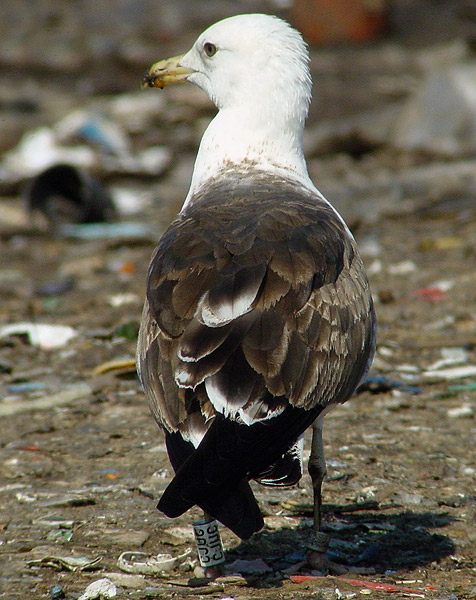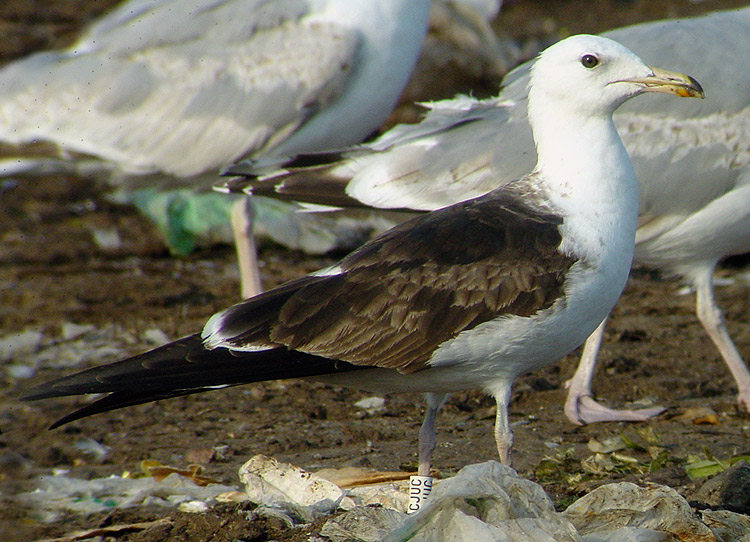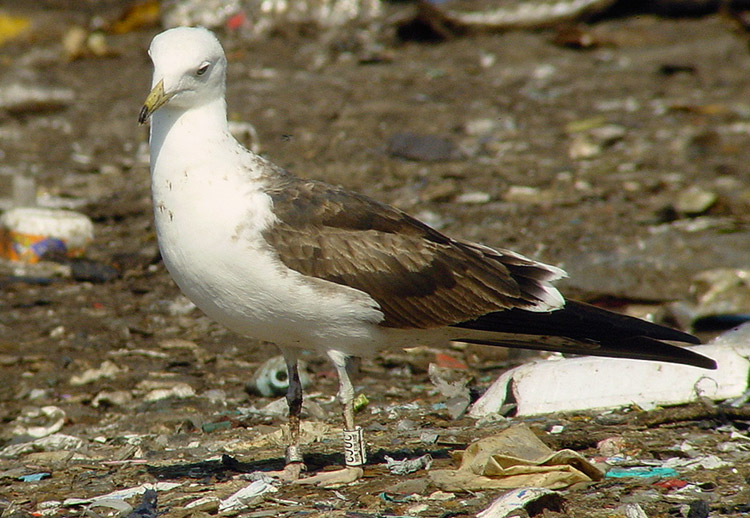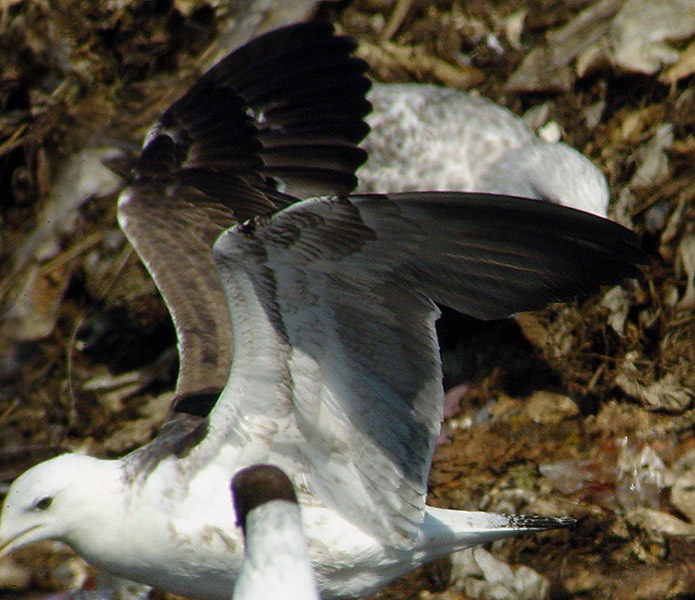 nominate Lesser Black-backed Gull (L. fuscus)
nominate Lesser Black-backed Gull (L. fuscus)
(last update:
(5 images) Larus fuscus fuscus 2cy CJUC July 14-17 2003, Tampere, Finland (61.33N 24.59E).CJUC was ringed in Kanala, Finland, ringed as pullus last summer 2002: June 28 2002 by Risto Juvaste. Hand when ringed: 195 mm. The bare part coloration is pretty advanced for 2cy birds, especially when compared to 2cy argenteus, argentatus, graellsii or intermedius from NW Europe. The bill-base is largely yellow and there is already a red gonydeal spot visible on the lower mandible. The legs are yellowish pink and the iris is still dark brown. Many 2cy fuscus in Finland have the body feathers and head moulted to plain white feathers, with only limited mottling on the sides of the breast and flanks. It's common to find 2cy birds moulting the head in July, as is often indicated by the 'moth-eaten' appearance. The upper-part moult in the scapulars is advanced, with all upper scapulars and the upper lower scapulars replaced for 3rd generation feathers. The last 2nd generation scapulars can be found in the lowest row of scapulars; they are bleached brown and worn at the fringes. On the wintering grounds, all wing-coverts have been replaced to 2nd generation feathers. In fuscus, these wing-coverts normally show a simple pattern: they are blackish brown with a wedge-shaped centre. These coverts are about half a year old already and have been exposed to the equatorial sun and now again to the Scandinavian summer sun. Consequently, the feathers are bleached and abraded, especially the first moulted feathers (median coverts, inner greater coverts and lower lesser coverts). Therefore, by mid July a next moult wave has been started, not surprisingly including these first moulted wing-coverts. The new 3rd generation wing-coverts appear dark blackish brown, not unlike adult feathers when fresh. Some of these 3rd generation scapulars and wing-coverts in the right wing are indicated in image 3. Note the difference in colour and abrasion between these new feathers and the adjacent old feathers. This 2cy fuscus is average in flight feathers moult. On the wintering grounds, all primaries, secondaries and rectrices were moulted to 2nd generation. After arrival in Scandinavia, the inner primaries are included in a next moult wave, and are replaced to 3rd generation. The tip of P1 is already visible and P2 is missing, see the 5th image. Typical Finnish fuscus in July have replaced primaries, rectrices and secondaries, all moulted in a complete post-juvenile moult on the wintering grounds, prior to northbound migration. The new second generation primaries are only a couple of months old and still look dark blackish. The second generation tail-feathers normally still show the white tips, but in some individuals these tips are worn away when 2cy birds arrive back in Scandinavia. Immediately after returning in Scandinavia some 2cy fuscus start a new moult cycle in the inner primaries, now growing in third generation feathers.
|




